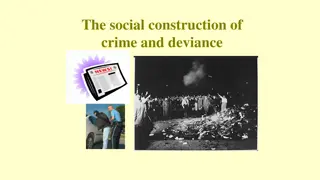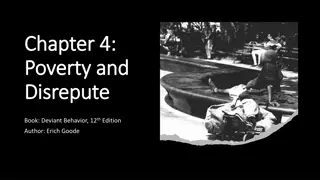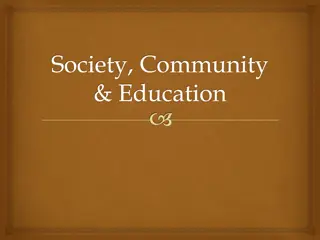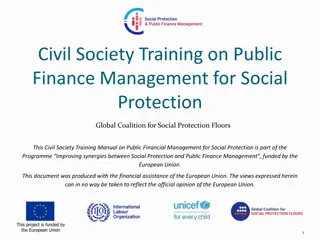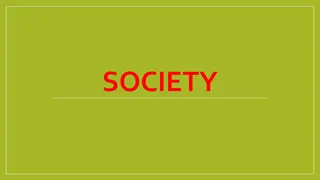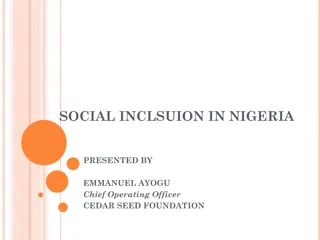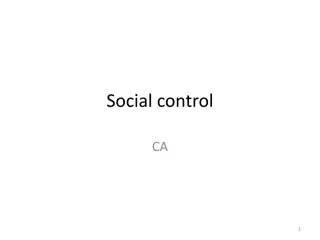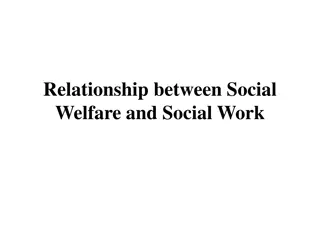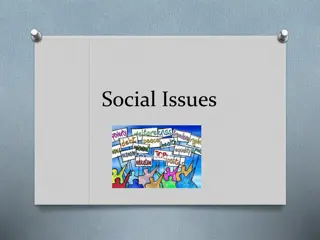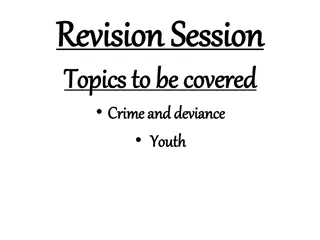Understanding Deviance and Social Control in Society
Exploring deviant behavior through different lenses such as historical, cross-cultural, and situational deviance. Delving into the mechanisms of social control by formal and informal agents like government, police, and peer pressure. Understanding the functions and methods of punishment within the penal system and examining the measurement of crime through official statistics, victim surveys, and self-report studies. Analyzing the intersection of crime with social class, gender, ethnicity, and age to grasp the complex dynamics of crime and society.
Download Presentation

Please find below an Image/Link to download the presentation.
The content on the website is provided AS IS for your information and personal use only. It may not be sold, licensed, or shared on other websites without obtaining consent from the author. Download presentation by click this link. If you encounter any issues during the download, it is possible that the publisher has removed the file from their server.
E N D
Presentation Transcript
Name Teacher:
Deviance based on role/position Situational deviance
Historical deviance Cross cultural deviance
Agents of social control Formal social control Formal agent How they control society The government Houses of Parliament makes Laws The police Enforce the law The court system Decide how to punish law breakers Prisons and other sanctions Different ways law breakers can be punished and controlled The army defends a country The army
Informal social control Paul Willis (1977) Learning to Labour
Punishment Definition Anti social behaviour orders (ASBOs) Individual social orders e.g. Banning someone from an area Offenders ordered to work in a community Physical punishment, e.g. Whipping Limiting the time the offender is allowed out Illegal in Britain Community service Corporal punishment Curfews Death penalty Electronic tagging To control and monitor the offender Financial punishment Fines Mental health orders Granted if the crime is due to mental illness A loss of freedom for a set amount of time Being offered supervision instead of prison Prison sentencing Probation
Measuring Crime Official Statistics
Victim Surveys Self Report Studies
Social class and crime Gender and crime
Ethnicity and crime Age and crime
Peer pressure Subcultures Boredom
Gender socialisation Different levels of social control
Poverty and unemployment Police targeting Different norms and values
Socialisation and subculture Lack of opportunities
Status frustration Marxism
Identify and explain two types of deviance (8 mark) Identify and explain two ways of measuring crime (8 mark) Identify and explain two solutions to crime (8 mark) Identify and explain two formal agents of social control (8 mark) Identify and explain two reasons why males commit more crime than females (8 mark) Identify and explain two reasons why the working class commit more crime than the middle class (8 marks) Identify and explain two reasons why certain ethnic minorities commit more crime than others (8 marks)
To solve crime we need loner prison sentences Evaluate the arguments FOR and AGAINST (24 marks) All crime would be solved by introducing longer prison sentences Evaluate the arguments FOR and AGAINST (24 marks) Official statistics provide the most accurate way of measuring crime Evaluate the arguments FOR and AGAINST (24 marks) Deviance is always relative Evaluate the arguments FOR and AGAINST (24 marks) The people most likely to break the law are young people Evaluate the arguments FOR and AGAINST (24 marks) People commit crime because they are poor Evaluate the arguments FOR and AGAINST (24 marks)
Poor people commit more crime than rich people Evaluate the arguments FOR and AGAINST (24 marks) People define deviance in the same way Evaluate the arguments FOR and AGAINST (24 marks) All deviance is relative Evaluate the arguments FOR and AGAINST (24 marks) Criminal behaviour is caused by lack of money and opportunities Evaluate the arguments FOR and AGAINST (24 marks)







